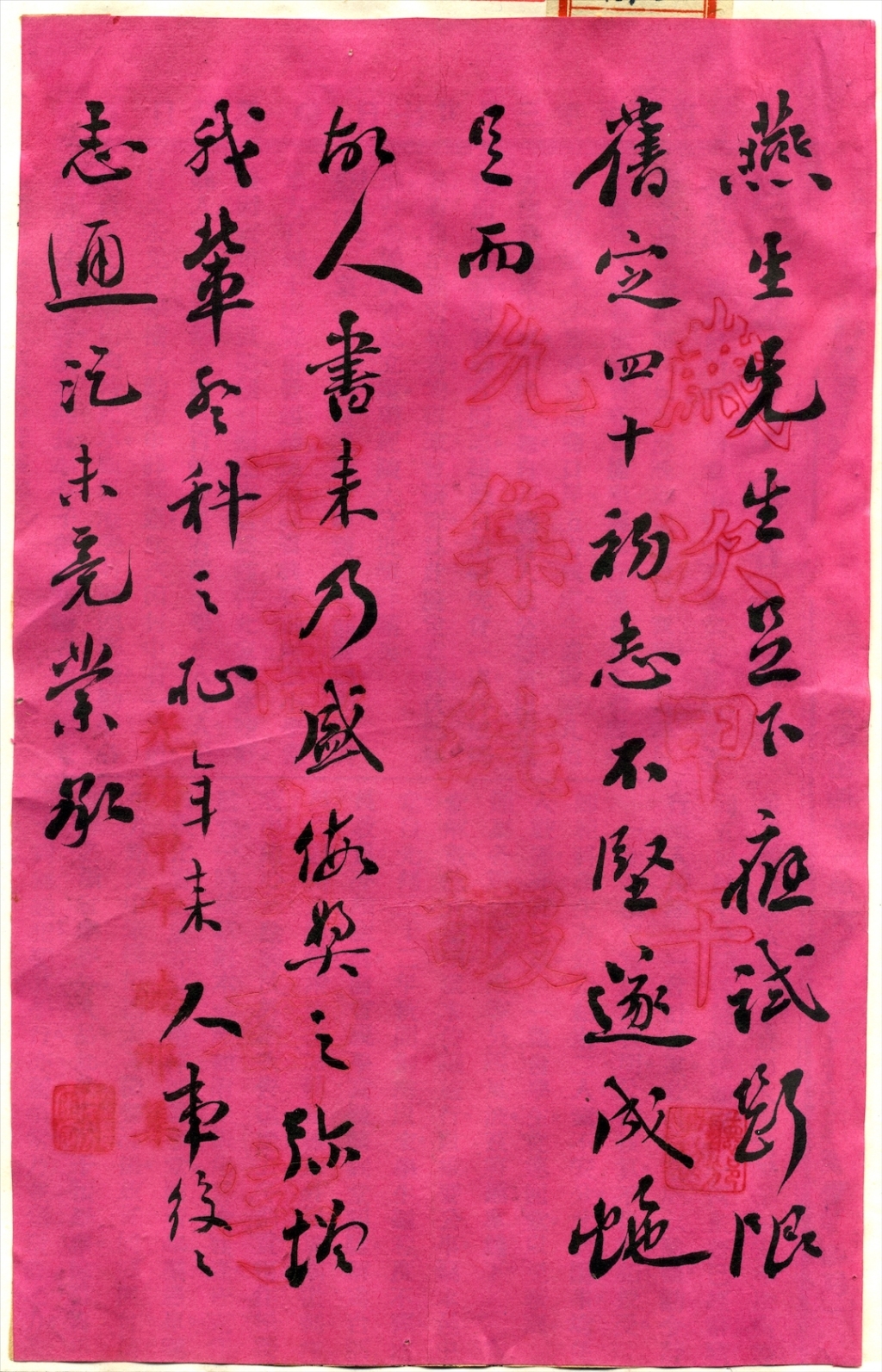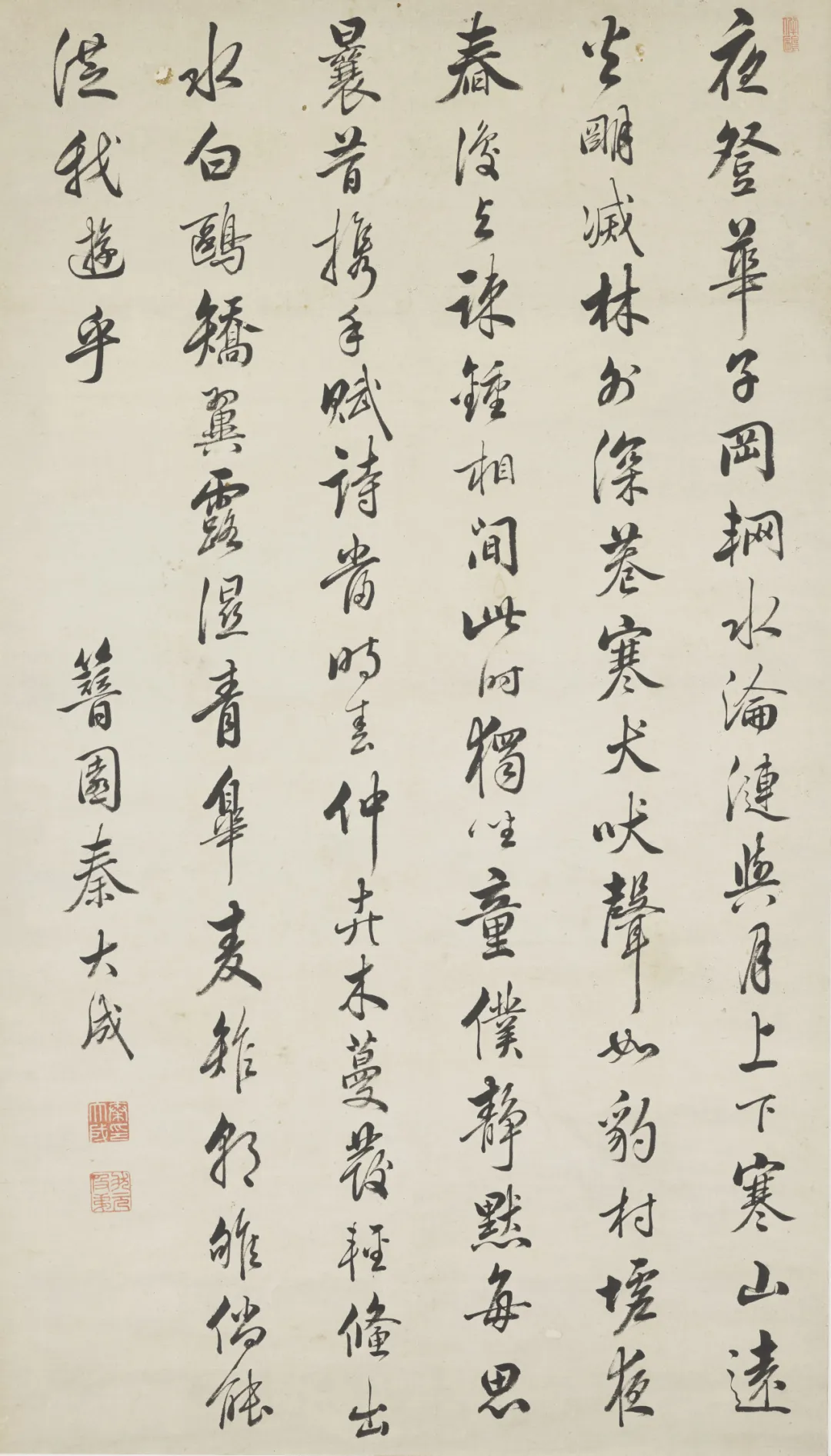
Jiading, with its rich cultural heritage, has long been known as the "Civilizing Jiading." Historically, it produced the "Three Top Scholars of Jiading": Wang Jingming, Qin Dacheng, and Xu Yi. The Paper reports that the exhibition "Beyond Calligraphy: The Multidimensional Elegance of the Top Scholars of the Qing Dynasty" opened at the Shanghai Jiading Museum on September 26th. Through their calligraphy and paintings, elegant stationery, and treasures, the exhibition presents the multifaceted lives of these "top scholars" of the Qing Dynasty.

Three No. 1 Scholars in Jiading
The exhibition features over 100 pieces (sets) of calligraphy, paintings, and letters, including 60 precious cultural relics. Through four sections, "Highest-Rank Officials," "Governing the Country and Upholding the Way," "Elegant Calligraphy," and "Breaking the Barriers and Reforming the World," it reinterprets the culture of the top scholar from a modern perspective, showcasing the diverse achievements of Qing Dynasty top scholars like Wang Renkan, Wang Jingming, and Zhang Jian in politics, education, art, and industry, creating an emotional resonance between historical figures and contemporary audiences.

Fan scroll written by Weng Tonghe of the Qing Dynasty, collected by Jiading Museum
The exhibition is a collection of precious cultural relics with rich content. It includes not only calligraphy and paintings by top scholars, but also elegant stationery and daily treasures. It brings together 3 first-class cultural relics such as letters from Zhang Jian to Song Shu in the late Qing Dynasty, 4 second-class cultural relics such as landscape scrolls and cursive script handscrolls by Wang Jingming of the Qing Dynasty, and 53 third-class cultural relics such as fan paintings by Weng Tonghe of the Qing Dynasty.

Letter from Zhang Jian to Song Shu in the 20th year of the reign of Emperor Guangxu of the Qing Dynasty, collected by Wenzhou Museum

Letter from Zhang Jian to Song Shu in the 20th year of the reign of Emperor Guangxu of the Qing Dynasty, collected by Wenzhou Museum
Among them, a shallowly engraved pipe containing the poem "Lanting Preface" written by Xu Yi in the 17th year of the Guangxu reign of the Qing Dynasty, a seven-character couplet in Xu Yi's regular script, and a fan in Liu Chunlin's running script are on display for the first time. Through the exhibition, visitors have the opportunity to personally witness these precious works of calligraphy by top-ranking scholars, fully immerse themselves in their art and life, and experience the elegant lifestyle of ancient scholars.

A pipe with a shallow engraving of the poem "Lanting Preface" written by Xu Yi in the 17th year of the Guangxu period of the Qing Dynasty

Qing Dynasty Xu Yi Lin Lanting Preface horizontal scroll Jiading Museum collection

Qing Dynasty Qin Dacheng excerpt "The Mountain and Pei Xiucai Di Letter" running script lens collection Jiading Museum
According to the organizers, they adopted an innovative display method for this exhibition, and carefully designed a distinctive exhibition route in each section. Through modern context and display methods, they displayed the diverse achievements of the 28 top scorers in politics, education, art and industry, leading the audience step by step to approach them and decode the ups and downs of their official careers and life choices.

Eight-character couplet in official script by Pan Shien of the Qing Dynasty, collected by Wenzhou Museum
For example, do you know how Wang Jingming, the top scholar in the Jiading imperial examination, became an intimate of Emperor Kangxi's entourage? Wang Jingming was the first top scholar in the Jiading district, and his role as both an official and a painter permeated his career. His success stemmed not only from his talent in poetry, prose, and painting, which earned him the emperor's admiration, but also from the cultivation and recommendation of his mentor, Wang Yuanqi, the Wang family's long history of imperial examinations, and the shifting political and cultural trends of the time. Wang Jingming's calligraphy and paintings, ranging from elegant and leisurely to exquisitely beautiful, perfectly embody the saying "top scholar in painting in my hometown."

Landscape scroll by Wang Jingming from the Kangxi period of the Qing Dynasty, collected by Jiading Museum

Wang Jingming's Bearded Dragon Painting in the 43rd Year of the Kangxi Period of the Qing Dynasty, collected by Jiading Museum
How did Zhang Jian, the top scholar of the late Qing Dynasty, transition from a bumpy academic career to the magnificent path of saving the nation through industry? The "Breaking the Wall and Reforming the World" exhibition focuses on the crucial decade (roughly 1885-1895) during which Zhang Jian's thought evolved. Through selected letters, combined with different versions of his interpretations, the exhibition reveals his arduous journey from a traditional scholar trapped in the imperial examinations to, amidst the pressures of national crisis, official corruption, and the hardships of ordinary life, his gradual recognition of the corruption and incompetence of the old system, ultimately fostering the groundbreaking idea of "saving the nation through industry."

Letter from Zhang Jian to Huang Shaoji in the 11th year of the Guangxu reign of the Qing Dynasty, collected by Wenzhou Museum
The exhibition is hosted by the Jiading Museum and the Wenzhou Museum, with co-organizers from the Ruian Museum. It will run until January 25, 2026. To help visitors better understand the multiple identities and spiritual worlds of these outstanding scholars behind the imperial examination system, the Jiading Museum will launch a series of activities, including special exhibition workshops, expert exhibitions, and Jiabo Academy lectures. Visitors can interpret the life trajectories of the top scholars through the details of their calligraphy and experience their commitment, talent, and pioneering spirit.
